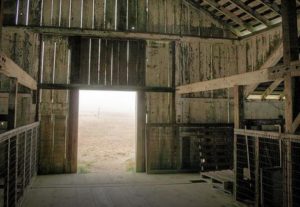 On February 25, 1983. operators were restarting the Salem Unit 1 pressurized water reactor in New Jersey. The water level in one of the four steam generators dropped low enough that a safety system generated an automatic signal to rapidly shut down the reactor. The signal was sent, but the reactor did not shut down. About 30 seconds later, an operator reacting to the low level in the steam generator manually shut down the reactor. The control rods inserted into the reactor core within seconds to stop the nuclear chain reaction and shut down the unit.
On February 25, 1983. operators were restarting the Salem Unit 1 pressurized water reactor in New Jersey. The water level in one of the four steam generators dropped low enough that a safety system generated an automatic signal to rapidly shut down the reactor. The signal was sent, but the reactor did not shut down. About 30 seconds later, an operator reacting to the low level in the steam generator manually shut down the reactor. The control rods inserted into the reactor core within seconds to stop the nuclear chain reaction and shut down the unit.
An investigation determined the automatic reactor shut down did not happen because of “mechanical binding” of the reactor trip breakers (in non-nuke speak, these electrical switches got stuck and did not move when they should have moved). Various protective devices in the plant can sense a problem and send a signal to the reactor trip breakers to shut down the reactor. The reactor trip breakers open, which causes the control rods to promptly and rapidly insert.
At Salem, the reactor trip breakers received the signal, but they did not open until the operators manually shut down the reactor using different switches. A review of maintenance records indicated that the reactor trip breakers had periodically failed, as recently as January 9, 1983. Following the January problem, workers applied an unapproved lubricant to the reactor trip breakers which may have contributed to their sticking. In other words, this lubricant may have become glue-like.
This event sounds like a freak occurrence that happens once in a blue moon.
Wrong.
The same thing happened at a nuclear plant less than 72 hours prior to this failure.
In fact, it happened at the Salem Unit 1 reactor on February 22, 1983. In that case, an automatic signal was also generated, but the reactor trip breakers did not open until the operators manually tripped the plant. The NRC reported that control room indications and computer data showed that the reactor trip breakers failed to open on February 22nd but workers did not realize it. They restarted the plant and encountered the same problem on February 25th.
The NRC was displeased. The agency fined Salem’s owners $850,000—the largest fine to that time—for starting the plant with this vital safety equipment broken. Had the plant been at full power when some condition triggered the need for an automatic scram, the broken reactor trip breakers could have caused a very serious accident.
Our Takeaway
What happened—twice—at Salem in February 1983 is called within the industry an anticipated transient without scram (ATWS). The steam generators remove heat produced by the reactor core and use that heat to boil water to run the turbines and generate power. The reactor’s designers recognized that a steam generator might someday encounter low water level in the steam generators. They realized that the low water level reduced the rate at which heat transferred out of the reactor. Consequently, the reactor core could heat up to dangerous temperatures. Thus, the reactor designers added a protective safety feature to automatically shut down—or scram—the reactor if the water level in any steam generator dropped too low.
In Salem’s case, the “anticipated transient” was low level in a steam generator. The designed response—which did not happen—was an automatic reactor scram.
The ATWS concept was not new. It had been identified as a problem during a meeting of the Advisory Committee on Reactor Safeguards (ACRS) in May 1969:
A study should be made by the applicant of further means of preventing common failure modes from negating scram action and of design features to make tolerable the consequences of failure to scram during anticipated transients.
Needless to observe, the nuclear industry did not embrace this position by the ACRS. The ACRS expanded its concerns during a meeting in September 1970:
The reliability of scram systems of current design demonstrated to date and the occurrence rate of anticipated transients leads to the conclusion that anticipated transients without scram having serious consequences will occur at an unacceptably high rate when there are a large number of reactors in operation.
In the years after the ACRS raised the ATWS flag, the nuclear industry argued that the sweeping changes recommended by the ACRS were costly and unnecessary. Some plant owners made minor hardware changes to improve the reliability of their scram systems, but the warning went largely unheeded until after these Salem events and one that occurred in June 1980 at the Browns Ferry nuclear plant. The Browns Ferry ATWS event will be covered next week in Fission Stories #107.
If the nuclear industry and its regulator truly placed safety first as is so often claimed, why were the ACRS’s safety concerns pooh-poohed for over a decade until a series of ATWS events happened?
If we see the barn door wide open, must we wait for some horses to trot out before closing it?
“Fission Stories” is a weekly feature by Dave Lochbaum. For more information on nuclear power safety, see the nuclear safety section of UCS’s website and our interactive map, the Nuclear Power Information Tracker.
Photo: http://www.flickr.com/photos/orinrobertjohn/3012191920/in/photostream/
